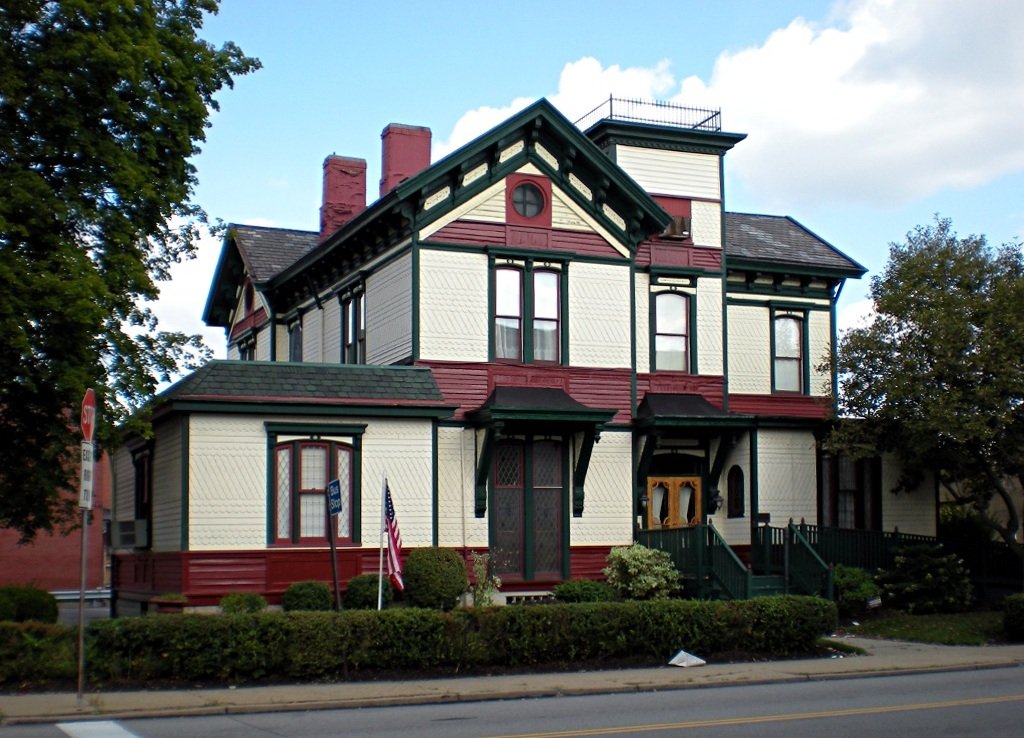#6823. Victorian Mansion with Tricolor Decorative Facade
The image showcases a magnificent example of Victorian architecture, likely from the late 19th century. This two-story mansion demonstrates the characteristic eclectic style of its era with elements of the "Queen Anne" movement. The facade of the house features a thoughtful composition and rich decorative details.
The color scheme of the facade is particularly noteworthy: a combination of cream as the main tone with rich burgundy and dark green accents creates a harmonious yet expressive appearance. This three-color solution was typical for the Victorian era, when facade design often emphasized architectural elements with contrasting shades.
The decorative details deserve special attention: intricate carvings on the gable, expressive cornices, delicate brackets, and a round attic window (oculus). The vertical composition is emphasized by two tall brick chimneys and a rooftop tower with railings, which visually increases the height of the building. Window openings of various shapes and sizes create an asymmetrical but balanced rhythm on the facade.
When designing a modern facade, several techniques can be borrowed from this historical example: using a contrasting three-color scheme to highlight architectural elements, applying decorative details to create visual interest, and playing with window shapes to achieve a unique building appearance. Moderate use of such techniques will help create an expressive facade while avoiding excessive ornate features.
